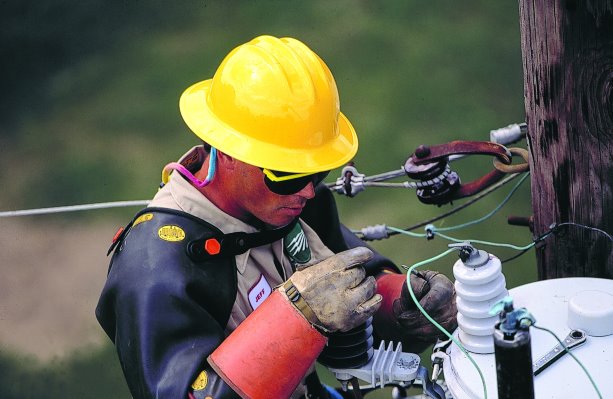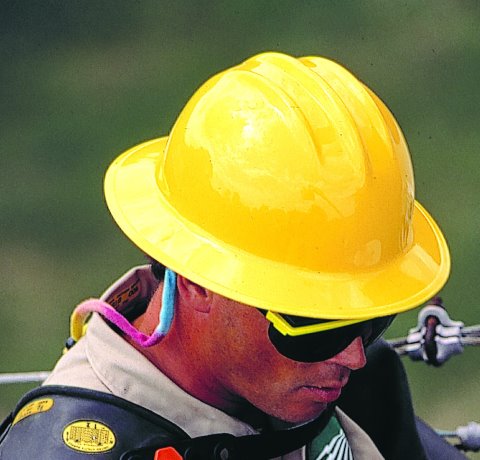CSA Group is set to release a new standard governing hard hats for public discussion and feedback.
The ubiquitous hard hat, a mandatory personal protective equipment (PPE) will see some incremental design changes, said Dave Shanahan Project Manager at the Canadian Standards Association (CSA).
"The next edition of the standard will be published early in 2015 as CSA Z94.1-15," he said.
It will replace the 2005 standard and continue the standard which was first set in 1948.
The changes include a defined "protected area" along with updated penetration testing, removal of the UV resistance requirement pending ongoing research to validate the impact of sunlight.
Shanahan said the standard is set by a committee of 40 people drawn from industry and science.
This iteration reflects the advent of lighter and more resilient mixes of polyethylene, which comprise the shell of the hard hat.
"Every manufacturer has their own secret sauce," he said noting what’s important to the CSA is how flame and heat resistant the material is, how well it stands up to impact and how it is affected by chemicals.
"We also looked at lamination in cases that would have an affect of softening the shell material," he said referring to the ever more popular practice of having an NHL or NFL team logos, or other designs printed on the shell.
While the current CSA shift – which will be available online for review at http://publicreview.csa.ca in August – is not revolutionary, the humble hard hat has come a long way since it was first invented as a form of protection.
U.S. manufacturer Bullard, founded in 1898, claims the first hard hat was created to protect miners in the San Francisco area, where the company was originally based.
Initially, the company said, miners wore soft "derbys" like a baseball cap with a hard leather brim.
The leather hard hat was based on the U.S. steel WWI helmet and patented in 1919 as the Hard Boiled Leather Hard hat, so called because of the steaming process used in its manufacture.
When the Golden Gate Bridge was under construction, Bullard modified the hat for construction workers, who were at risk from falling rivets.
The company kept adapting and reinventing the hard hat for a diverse range of applications, adding respirators, making it in different materials and designs over the next few decades.
By 1938, they were making the classic aluminum hard hat, though it was discarded because it conducted electricity.
It was followed by fiberglass through 1940 to 1960.
A quick search of eBay finds vintage hard hats – while probably not meeting today’s standards – are in demand with one selling for US$550 while the older aluminum hats are listed for US$260.
From about 1960 forward, hard hat shells have been made from polyethylene, some with a single ridge for strength, others with two or three ridges, depending on the manufacturer.
The shell, however, is only one part, noted Shanahan.
It is the suspension mesh inside the shell, which does most of the work absorbing energy from an impact.
The design of the hard hat hasn’t changed much though there are different variations on the theme.
Mining helmets tend to have a 360 brim, construction helmets have a single brim and welding helmets have no brim.
Some workers like to wear their helmet backwards, said Shanahan, and for that reason CSA stipulates hard hats worn that way must be certified to be worn either way.
3M has introduced a sensor, which changes from red to white as the hard hat accumulates UV exposure over time and weakens the plastic shell.
When the sensor turns white, it’s time to replace it.
Materials are also changing: U.S. manufacturer MSA’s Gard GRN Hard Hat is made from sugarcane ethanol, making for a small carbon footprint.
Design is also shifting.
Honeywell is making hardhats, which they say better fits the heads of Chinese workers, whom they say have a different skull profile than western heads.
"We’re always looking for lighter and cooler designs and materials," she said noting the biggest issue with users is the weight and heat ventilation – though not so much of an issue in Canadian winters.
Bullard doesn’t offer a UV sensor, she said, but noted the company website FAQs have a quick test, which involves compressing the brim and then checking for hairline cracks.
If there are no cracks, the plastic is still useable though it’s also important to check the suspension mesh for any signs of tears or fraying.




Recent Comments
comments for this post are closed